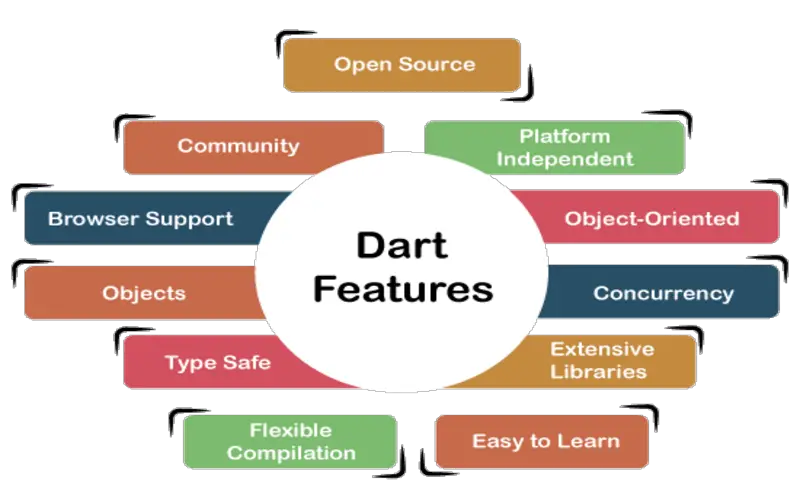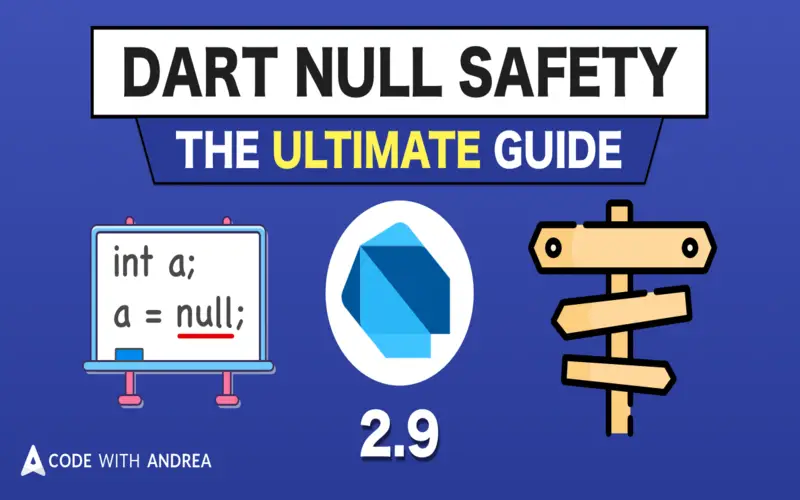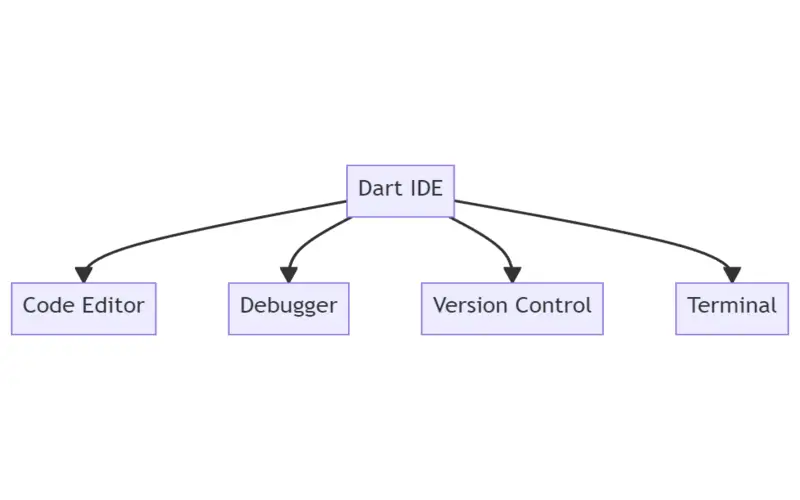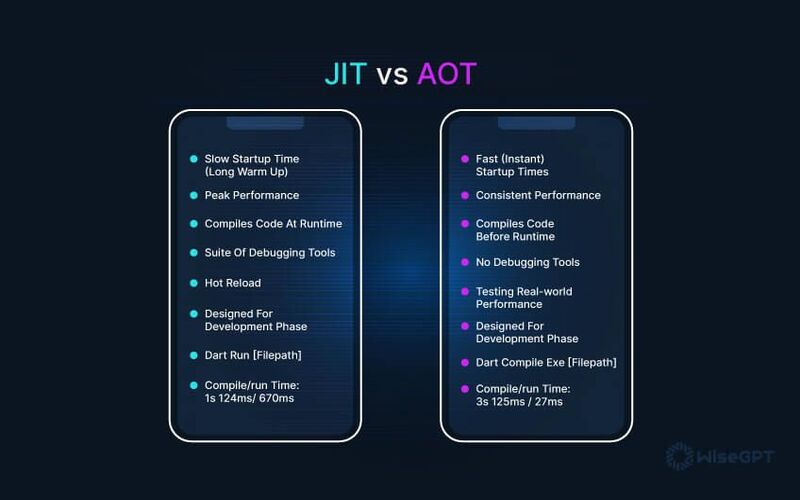What Is Dart?
Dart is a programming language patterned by Lars BaK and Kasper Lund and programmed by Google. It can be used to develop web and mobile apps and server and desktop applications.
Dart is a customer-evaluated programming language developed by Google in 2011 that is pre-owned to create quick applications for any platform. Google initially used it as an internal programming language to generate web servers and mobile applications. Dart’s source code appears in the same manner as other programming languages such as C, JavaScript, Java, and C#. It also comes with its virtual machine (VM) called Dart VMA, which is pre-owned to run the native application. It also has its bundle manager, which is referred to as Pub. It gained popularity with Google’s announcement of Flutter for cross-platform mobile application development. The primary reason behind this is that Flutter is entirely focused on Dart. Dart can be quickly learned by programmers who have experience with OOPS languages.
Advantages Of Dart
- It is an open-source and client-evaluated programming language.
- It is very flexible across the projects.
- It is written by Google and operates on the Google Cloud Platform.
- It is merely to attain if we already know JavaScript because it is identical to JavaScript.
- It is faster than JavaScript.
- It is mainly pre-owned to develop mobile applications.
Important Concepts Of Dart
Dart is an object-initiated, class-based programming language with voluntary typing and assistance for mixing-base inheritance. When trading with Dart, you should keep the following ideas in mind
- Everything is an object, and every object is a class example, and all the objects succeed from the object class.
- Determining static types verifies your goal and enables tools to do static checks.
- Earlier, while running your code, Dart analyzes it.
What Is The Dart Language Used For?
The Dart language has the significant function of developing apps on distinct platforms because it falls under common purpose programming language.
Apart from the communicated function, Dart is also marketed toward customer development using an object-initiated programming language, static type observes, and C-style syntax.
In contrast to programming languages such as Java, which may give program with a vertical learning curve, the purpose of the Dart Language is to create a cordial relationship between the programme and the developers.
It is achieved through Dart’s tools, code, extensive options on the Dart libraries, administered to Dart platforms, and its compilers.
Features Of Dart
The Dart is an open-source, object-initiated programming language. The Dart offers many valuable characteristics extensively focused on compilation, execution, safety, memory management, and concurrency.
1. Platform Independent
Dart assists all primary performing systems such as Windows, Linux, Macintosh, etc. Dart has its own Digital Machine, known as the Dart VM, which allows us to run Dart code on any operating system.

2. Object-Oriented
Dart is an object-initiated programming language and assists all oops theory, such as classes, inheritance, interfaces, and optional typing characteristics. It also helps modern concepts like mixing, abstract, classes, personalized generic, and robust type systems.

3. Concurrency
Dart is a nonparallel programming language, which assists multithreading using insulate. The insulates are the substances relevant to threads but don’t share memory and manufacture the communication between the procedures by the message passing. The message should be sequential to make efficient communication. The sequential message is ready by using a snapshot created and provided by the object and then transformed to another insulate desterilizing.

4. Considerable Libraries
Dart is formed by many useful integral libraries involving SDK (Software Development Kit), core, math, async, convert, html, IO, etc. It also offers the benefits of managing the Dart code into libraries with proper names.

5. Reliable Compilation
Dart is both reliable and fast when it comes to compiling code. It assists two types of compilation procedures, AOT (Ahead of Time) and JIT (Just-in-Time). The Dart code is moved to another language, which can be launched in advanced web browsers.

6. Type Secure
The Dart is the type-safe language, which means it uses both stable type checking and runtime checks to verify that a variable’s value always equals the variable’s regular type, sometimes it is known as sound typing. While types are needed, type annotations are elective because of type intrusion. It makes its code more readable. Another advantage of using type secure language is that when we convert a section of code, the system alerts us to the tempering that we have already adjusted.

7. Editor And IDE Support
Dart code may be inscribed in lightweight editors like Superb or VIM. The most generally used IDEs for Dart application development are IntelliJ IDEA and Android Studio, which come with Dart Plugin.

8. Productivity
Dart and Flutter have a more miniature society and various online societies. Despite excellent documentation, many experiences remain confused about understanding Dart.

9. Ahead-Of-Time (AOT)
Dart assists Ahead-Of-Time (AOT) compilation mode. Dart code can be immediately converted to native machine code in this mode. Apps manufactured with Flutter are employed in app stores as AOT-compliant Dart code.

10. Reuse Of Code
Dart code can be complied with evaluated JavaScript code performed on all advanced web browsers. It enables Dart code reuse between mobile apps and web apps. Dart is said to be capable of reusing up to 70% of its code between both mobile and web apps.



















